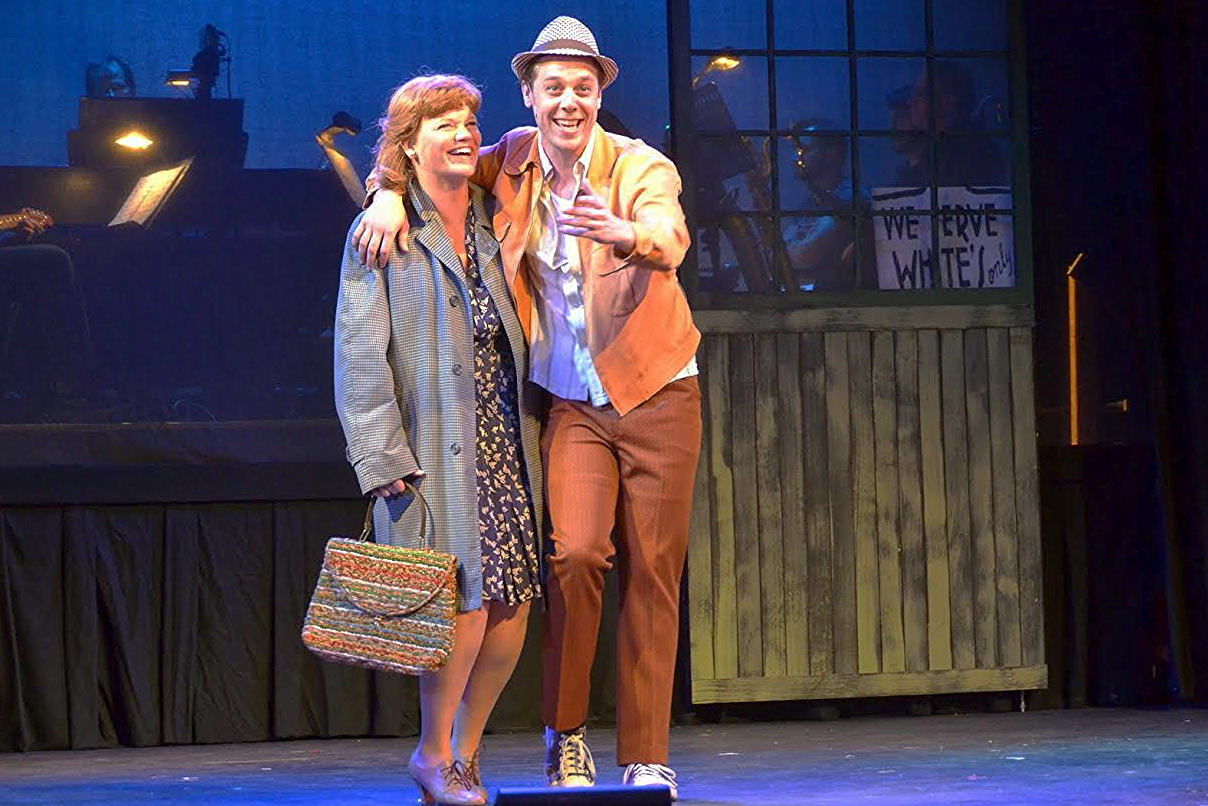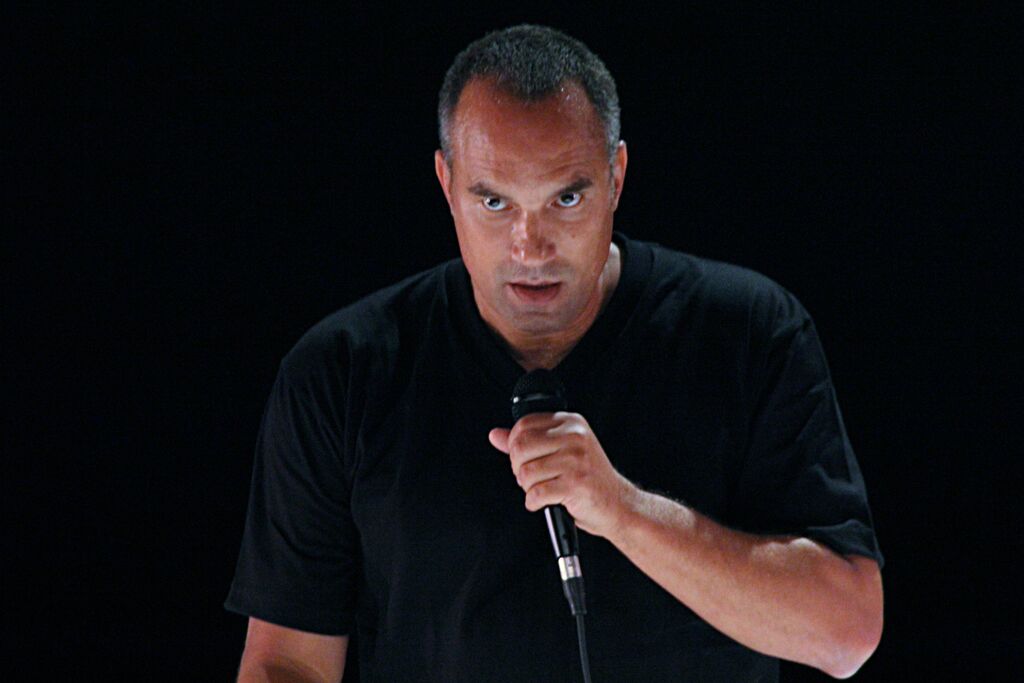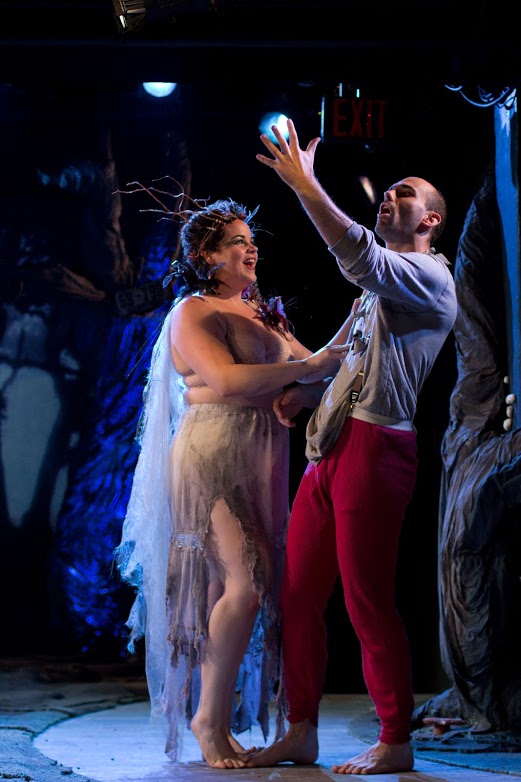Review of Tuesdays with Morrie at Playhouse on Park
A play about friendship and dying is bound to be affecting, but for such a play to give viewers a renewed sense of vitality takes some doing. And that’s what Tuesdays with Morrie, directed by Sasha Brätt at West Hartford’s Playhouse on Park achieves, and that effect is mostly the result of excellent acting and the show’s well-paced presentation.
Based on a best-selling memoir by Mitch Ablom, the celebrated sportswriter, Tuesdays with Morrie could easily retread the simplistic “wisdom literature” the memoir aims for. But Brätt’s approach to the theater adaptation, by Ablom and Jeffrey Hatcher, makes some decisions that help bring the friendship between Mitch and his former sociology professor Morrie Schwartz to life. First of all, as portrayed by Chris Richards, Mitch isn’t particularly likeable. As a student, he’s just an average guy whom, in part because of his piano playing, his teacher has taken a shine to. That makes for a nice parting upon graduation but with no sense, on Mitch’s part, that anything deeper will be forthcoming between them. Secondly, there’s Gannon McHale as Morrie, played with a winning sense of how to finesse fatality that never becomes maudlin.
Gannon McHale (Morrie), Chris Richards (Mitch)
As a successful sports columnist in Detroit, Mitch is the kind of guy who knows his stuff, is consumed by his career, and quite content with himself. He stresses that he cut-off any memory of Brandeis, where he went to college, and ignored anything that would call that time back to his mind. That is until he happens to see an interview with Schwartz on Ted Koppel’s Nightline. Schwartz has been diagnosed with Amyotropic Lateral Sclerosis (aka, Lou Gehrig’s Disease), which is fatal, and reflects about his life on the air. Mitch travels east to Massachusetts to pay his respects. And there he finds himself once again under the spell of his old mentor.
Morrie Schwartz is a canny character, the type who knows how to ingratiate himself, and also how to be needy and giving at the same time. It’s a wonderful role and McHale does it full justice. His Morrie is clearly the kind of person who feels useless alone, who lives and shines for others. And to have Mitch back in his life—after the younger man suggests, almost in spite of himself, visiting Morrie weekly, as he did during the professor's office hours in college—is to have again a purpose for living, even as he’s dying. In promising to be there to the end, Mitch gives Morrie a weekly reason to rally.
Chris Richards (Mitch), Gannon McHale (Morrie)
Because the weekly encounters between the two, which Mitch tapes, sometimes take the form of question and answer, the nature of their relationship remains structured by their roles in each other’s lives: teacher and student. Mitch’s success in his chosen field says nothing about how well he thinks or how much he feels. And that’s what his old professor is testing him on.
The tensions between them have to do, first, with the unpleasant facts of Morrie’s condition and Mitch’s effort to treat them as less pressing than they are (along those lines is his weekly delivery of a bag of food to Morrie, as though bringing him care packages that should sustain him, regardless of how advanced the disease is). Then there’s the tension of Mitch’s defensiveness when Morrie’s reflections on life begin to make Mitch see how shallow his own successful life is. It’s not a question of thinking he should have done something else with his life so much as a question of how he should be. Like any good humanist philosopher, Morrie’s lesson is not about having more or doing something better (Mitch has plenty and does quite well), it’s about being more human, not flinching from the “touchy-feely” aspects of life that make Mitch cringe.
The interplay between the two, because of these tensions—to which is added Morrie’s manner of winning a visit from Mitch’s wife—makes for involving theater defined by dialogue and narration. We’re privy to what Mitch wants us to see and he wants us to see how valuable knowing Morrie has been for him. And to see its value for ourselves.
Gannon McHale (Morrie), Chris Richards (Mitch)
And in that, Tuesdays with Morrie is a lesson to us all. If we have interacted with the infirm and the dying, we can still be reminded of what that experience meant; and if we haven’t, the play makes the reality of such vigils very palpable. The play, in the end, almost inevitably evokes tears if only because we have come to know and love Morrie. McHale lets us view the full humanity of this man in a way that we may not find so easily matched in reality. And Richards, surprisingly, is not overshadowed. Much as we might favor the elder role, there’s a certain sensibleness wielded by a person in the midst of life that Mitch retains, and Richards is quite adept at confiding in his audience, knowing that we will share at least some of his squeamishness or embarrassment or selfishness.
Richly rewarding in its grasp of the fleeting connections in our busy lives and of the deep presence of persons, Tuesdays with Morrie at Playhouse on Park offers a great way to pass some time in good company.
Tuesdays with Morrie
By Jeffrey Hatcher and Mitch Ablom
Based on the book by Mitch Ablom
Directed by Sasha Brätt
Scenic Designer: Christopher Hoyt; Lighting Designer: Aaron Hochheiser; Costume Designer: Lisa Steier; Sound Designer: Joel Abbott
Playhouse on Park
September 30-October 18, 2015
























































